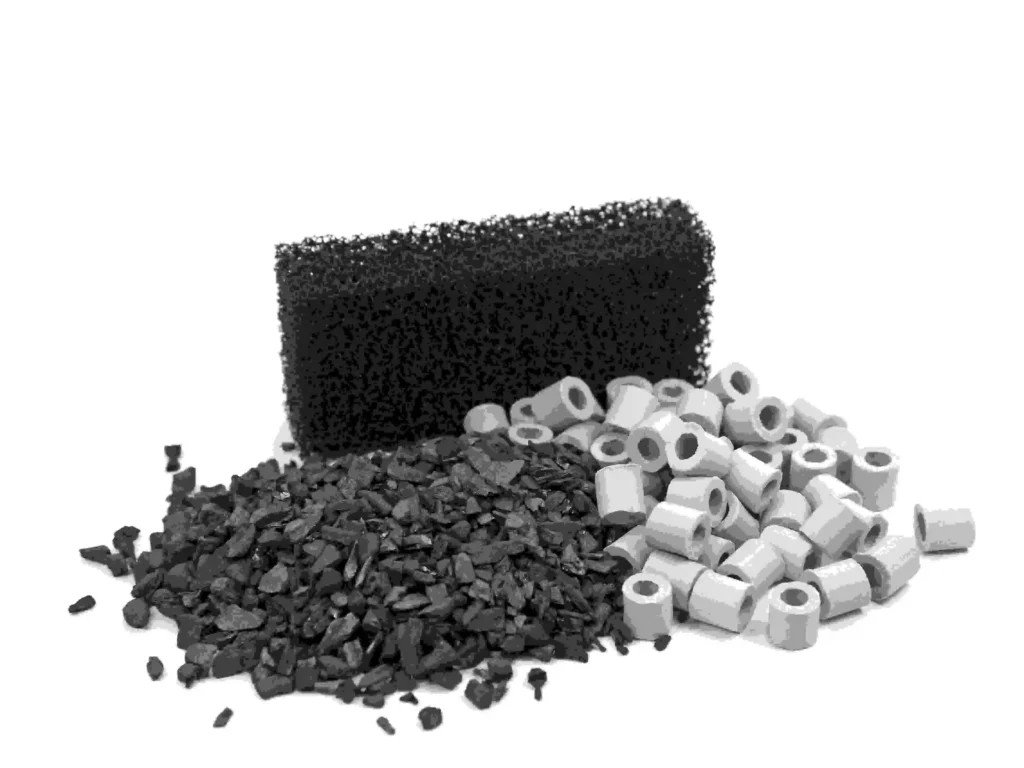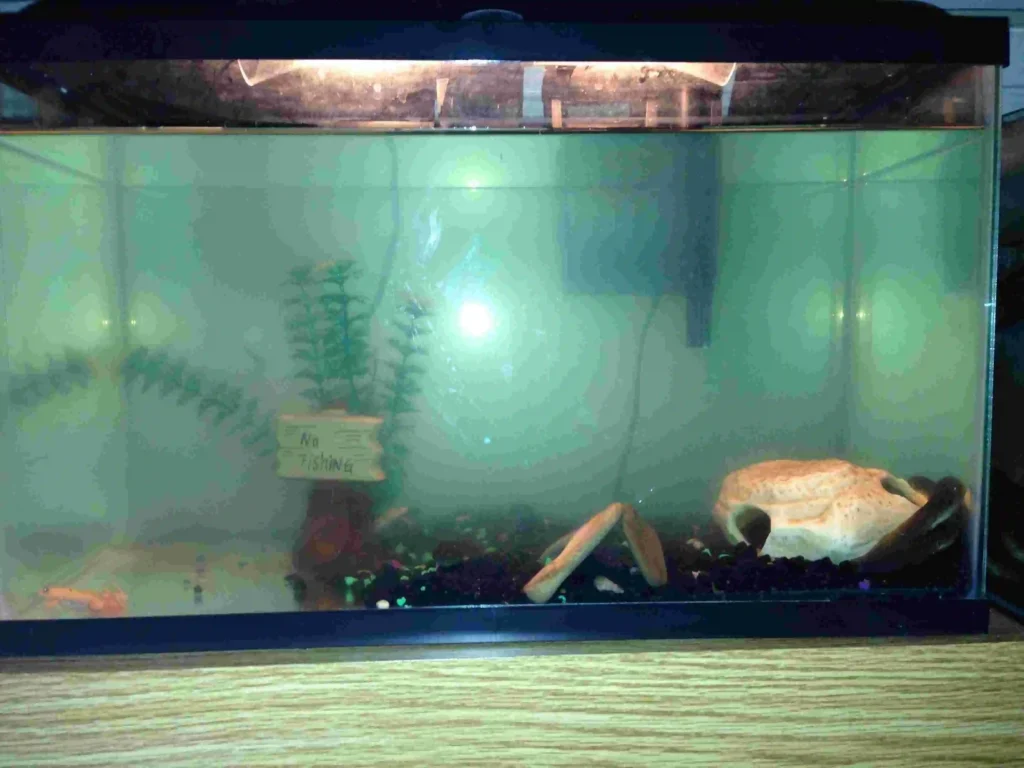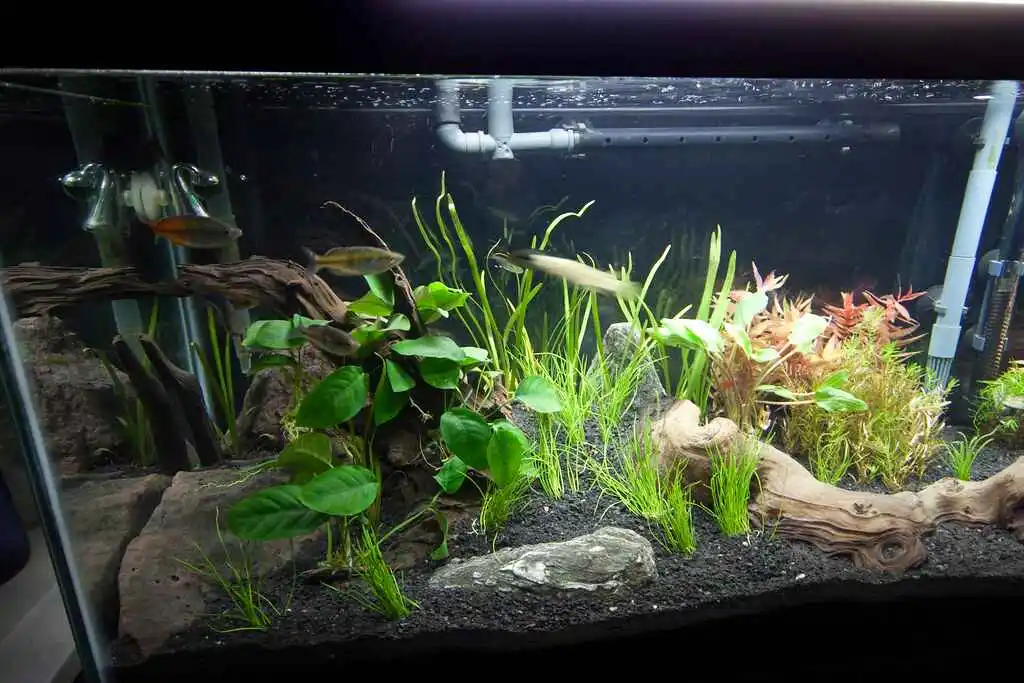Maintain clean water and a comfortable environment for your aquatic pets with fish tank maintenance practices. One of the major elements of this is how often should the carbon filter be changed in a fish tank. This filter helps clear nice water for the fish by removing bad stuff like lime, brown colors of leaves, and bad smells things, which makes the water beautiful and good for the aquatic pets. Still, drawing the line of when to replace the carbon filter may remain a little sophisticated for the majority of aquarium owners. This will be decided by the factors like type of filter you are using as a big tank as well as the many fish in it.
Factors Impacting Filter Longevity
- Tank Size: The magnitude value of your tank is very vital in terms of the lifespan of the carbon filter you use. In contrast, wide tanks, need to be changed more frequently as a result of the subsequent increase in water that is subject to processing in the tank’s filter.
- Fish Population: The more fish you have in your tank, the faster your filter will get saturated with all the waste that is generated. Increased water quality demand is driven by the larger number of additional fish that higher bioload introduces to the liquid and consequently results in increased absorption of waste and pollutants by carbon.
- Type of Fish: Some fish types are relatively cleaner meanwhile some may be messier therefore producing more waste. In the case of the species that live in tanks, their water may need to be changed every couple of weeks to stay fresh as well.
- Type of Filter: Filters are not all made in the same manner. The design and the strength of the filter you pick can decide the speed at which the carbon filter works and how frequently it would need to be changed.
- Plant Life: Water plants also impact the lifespan of carbon filters. Tanks with many live plants are capable of maintaining stable water parameters, thus even filters can decide to be changed much later.
Guidelines for Filter Replacement
The carbon filter in the aquarium has to be replaced in the event of loss of effectiveness which is due to many factors as there is no one-rule-fits-all. In many cases, one should replace the water filter for tanks at the size of a normal tank once a month. If your tank is big and you have lots or a ton of fish or are keeping species that make a lot of waste, you might need to change the filter every two to three weeks.
If the number of fish in your tanks is reduced and more plants are there, you might be comfortable with six weeks in between the appointments. The thing that should be underlined is the fact that you have to get water tested as well as the pH. When water starts to get dirty and it emits a bad smell, or one of the tests is out of spec even if it’s not on the schedule, it’s time for the carbon filter to be changed in a fish tank, which you have to do as soon as the situation is.
Maintaining a clean filter is one of the essential steps in ensuring that you keep a well-balanced environment in the fish tank. Besides improvising on changing the carbon of the filter, make sure that you get rid of or replace the other parts that the maker tells you. By doing that, the whole filtering machine will keep in proper shape.

Signs That the Carbon Filter Needs Replacement
When you are looking for how often should the carbon filter be changed in a fish tank. The water looks murky and discolored scheme, which shows it is not been filtered correctly, proving it has not been cleared. Sour Smells mean a Filter needs replacement. If water takes a long time to penetrate the filter it means that it’s almost clogged and can’t grasp more. Knowing that the already gross filter is black with stuff on it reveals it needs service. As more algae grow, the filter is not able to take away what algae eat, hence the algae continue to grow and even outgrow the growth before. Finally, sudden sharp fluctuations in the low test of ammonia, nitrite, and nitrate confirm that the filter is not working well.
Steps to Replace the Carbon Filter
Replacing the carbon filter in your aquarium is a straightforward process that can significantly impact the health and clarity of your tank’s water.
Here are the key steps to ensure you replace the filter correctly:
- Turn Off the Filter: The safety and health of our employees is always the main priority. This should always be done when doing any maintenance on the aquarium filter. This thus stops the water from being pumped out of the bank even as you put a lot of rigor into your daily work.
- Remove the Old Carbon Filter: Open the filter tray compartment conforming to the instruction sheet. Carefully take out the used carbon filter. Building on my existing business management knowledge, I have set forth a clear goal for my personal growth. Keep vigilant to avoid enough trash from the aquarium.
- Clean the Filter Compartment: Use this chance to clean the compartment before replacing the old carbon filter with the new one. Use clean water for this operation. Try not to use soaps or chemicals which may be harmful to your fish.
- Prepare the New Carbon Filter: Now grab the new carbon filter and rinse it under cold water so that any dust or particles that may be on it will be washed off. This step is critical because it prevents the carbon from becoming a suspended substance that will happen in the aquarium.
- Install the New Carbon Filter: Put the new carbon filter in the compartment, making you sure it fits right and properly according to the manufacturer’s guidelines.
- Restart the Filter: Now the new filter is already in place and go back on the filter. Close the compartment and turn back on the compartment. Make sure to test out the filter and tank for a few minutes to see if everything runs as it should and that no leaks occur.
- Check Water Quality: When installing the new filter, look out for any notable changes in the water clarity for the following couple of days. As water passes through the new filter for the first time, it may take a while before the new filter will fully cleanse the water. Continue to conduct water tests to check its quality, and adjust the water supply systems as needed.

Alternative Filter Media and Their Maintenance
There are various types of filter media available that can be used to maintain the water quality in your aquarium. Each has its purpose and maintenance requirements.
Here’s an overview:
- Biological Media: This particular form of media gives a place of residence to useful microbes which is responsible for the reduction of ammonia and nitrite to nitrate which is not as harmful. Ceramic rings, bio balls, and sponges are some of the common choices for this tool. This task is to refresh the sponge by rinsing them in tank water once in a while to remove detritus and excessive nutrients without killing the beneficial bacteria.
- Mechanical Media: Different brands offer different filter mechanisms. Some of them, like filter floss or sponges, mechanically remove particles from the water. It is their aid to constantly clean or replace as they get clogged up. It eliminates the need to use disposable items, like flatware and cotton buds, which clog up landfills. All you have to do is rinse them in tank water or replace them when they lose their shape or they can no longer be cleaned.
- Chemical Media: Besides activated carbon, zeolite and phosphate extractors can be used to treat ammonia as well as algae growth. they usually start to fail, which determines the frequency of replacement a condition-based one or according to the schedule offered by the supplier.
- Peat Moss: Peat moss be used in the way to soften the water to lower the pH. This would be particularly beneficial for tanks housing fish requiring such conditions. It could be replaced every time after the effectiveness of waterproofing is decreased, clearly shown through the changes in water parameters.
The Role of Activated Carbon
Activated carbon which is known for its porous structure is the again and again filter purifying aquarium water because it completely removes the dissolved organics, odors, colors, and dangerous stuff like chlorine or metals. This feature signifies its considerable surface area that leads to the adsorption capacity of pollutants enabling it to stick to carbon’s surface instead of being absorbed. It is straightforward to cleanse pollutants since a new layer of thin carbon can be replaced. To keep it working at its best, replacement is needed because its pores can be filled with lint, thus decreasing its effectiveness. Consequently, the replacement of saturated carbon is pivotal to the upkeep of safely clean aquarium water.
Conclusion
Carbon activated is a key element of the filtration system to keep the water in the aquarium healthy and the water clear. Pollutants, odors, and discoloration are all specifically adsorbed which in turn closely mimics a natural environment that is lively and pure for aquatic life. Replacement with new should be done after a 3 to 4 weeks period to ensure good performance. Water quality monitoring and prompt action for example, when the watercolor starts to reduce or a bad odor starts to waft are an important element of a successful aquarist job. Indeed, the great deal of carbon filter functioning is the main factor that refers to the central role of this filter in the water purification process since water purity depends significantly on its correct and regular operation, which in turn, defines the key role it plays in water purification.
Frequently Asked Questions (FAQs)
Q1: How often should I replace the carbon in my aquarium filter?
The best frequency for replacing the carbon in your fish tank filter should be once in about every 3 weeks to 4 weeks. However, it may vary if you have a larger aquarium and more fish based on the tank size and overall tank conditions. On the other hand, the monitoring of the water regularly can do great services by dictating when the replacement needs to be made.
Q2: Can I clean and reuse activated carbon in my aquarium filter?
No, when carbon grows impregnated with contaminants, it does not start to develop fouling nor does it become still usable for cleaning and regeneration purposes in a domestic aquarium setting. The number of pores for water limits its adsorption capacity; hence the absorbing pores may not hold water once they are saturated. For the replenishment of water, the addition of new carbon elements is required.
Q3: Why is my aquarium water still cloudy after replacing the carbon filter?
The cloudiness of water observed after the carbon filter replacement might appear due to many culprits not caused by the operational inefficiency of the filters. They include- but are not limited to – overfeeding, inadequate tank filtration, bacterial blooms, and also the need for mechanical media for the small particulates. By scanning through all these factors and handling them appropriately you can find a solution to the cloudiness issue.
Also Must Read: Can You Put Granite In a Fish Tank?



